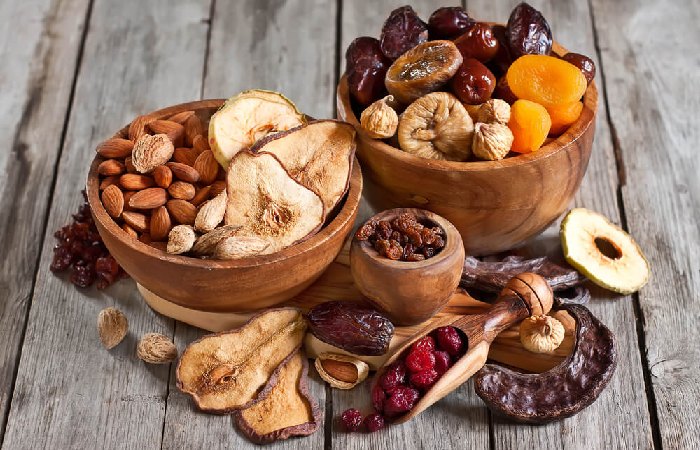Nuts They lower cholesterol, help you lose weight, and even prevent cognitive decline. There is no problem eating nuts have multiple capacities and enrich the diet.

Although they get bad press for their high-fat content, between 50 and 70%, and their energy density, 160 or 180 kcal per 100 grams, nuts provide more health benefits than dislikes. And, in addition to being an excellent basis of essential nutrients, it gives a high content of protein, antioxidants, fiber, minerals, and vitamins B and E. In addition, the fats they contain are “good,” that is, monounsaturated.
And polyunsaturated, which, as the Mayo Clinic website points out, “help lower LDL cholesterol levels, lower triglycerides, slow blood clotting, and improve the health of blood vessels.” With such properties, it’s no surprise that the WHO recommends its inclusion as part of a healthy diet.
Table of Contents
Nuts A Handful A Day
In addition, the Spanish Heart Foundation advises eating 50 grams of nuts per day. Despite these signs, statistics show that one in three Spaniards never consume it and that less than 8% consume it daily. In this regard, the medical community agrees that nuts should not be left out. Of course, you have to take into account how they are consumed. The best way is to consume them in “raw version,” without additives or salt, or excluded from specific preparations. And it is that, although they do not have miraculous properties or they do not cure diseases by magic, the truth is that they can cover various nutritional needs or help in the regulation of diseases. You could say that there are nuts for all conditions.
Bone Disorders: Pine Nuts And Almonds
Almonds are nuts that provide more calcium, especially 269 mg 100 g. Hence, they are an excellent option to supplement or increase the levels of this mineral and prevent osteoporosis or combat bone discomfort. For their part, pine nuts provide interesting amounts of zinc, 6.45 g per 100 g, which helps in the formation and mineralization of bones and joints.
Nuts are a generic group of grains, seeds, or fruits. They have in common a low water concentration and a high-fat content.
Nutritive And Beneficial For The Cardiovascular System
On the one hand, its fats protect against the onset and development of atherosclerosis due to the total absence of cholesterol and its ability to lower total cholesterol in the blood, and more precisely, its LDL fraction, commonly called “Bad cholesterol.”
To this effect, already beneficial in itself, is added that its consumption maintains or slightly increases HDL cholesterol (“the good”) so that the total cardiovascular risk decreases.
Rich In Fibers, Proteins, And Minerals
Another vital component of nuts is fiber, which prevents constipation and inhibits the digestive absorption of cholesterol from certain foods.
Nuts are mostly a good source of protein (10 to 26%), distinguished by their high arginine content. This amino acid gives rise to the formation of nitric oxide. This compound promotes good muscle tone in the walls of the arteries, facilitating their dilation and reducing the risk of high blood pressure.
Only chestnuts are rich in carbohydrates. In this dry fruit, the proportion of carbohydrates reaches 41%, and fat remains at 2%. This composition has enabled chestnuts to be a staple food (the primary energy source) for certain peoples, such as the Corsicans.
The contribution of minerals is remarkable, especially manganese, copper, magnesium, potassium, zinc, and selenium, the latter especially abundant in nuts.
Almonds are distinguished by their calcium content, making them an alternative to dairy products. 60 g of almonds provide 150 mg of calcium and a glass of milk and give twice as much protein as yogurt.
How Many Calories Do They Provide?
Its abundance in fat makes its caloric value high. 100 grams provide the following kilocalories:
- Macadamia nuts: 718 kcal.
- Nuts: 650 kcal.
- Pine nut: 629 kcal.
- Hazelnut: 628 kcal.
- Almond: 575 kcal.
- Peanuts: 571 kcal.
- Pistachio: 557 kcal.
- Cashew nuts: 550 kcal.
- Chestnut: 213 kcal.
But in practice, their caloric intake is not exaggerated because they are consumed in moderate quantities in a balanced diet. The usually recommended serving is “a handful,” which, translated into grams, would be about 30 grams without the shell.
